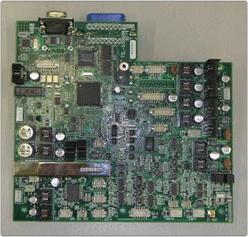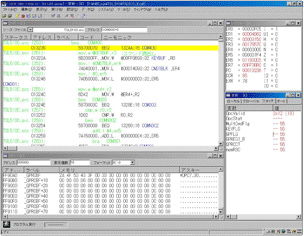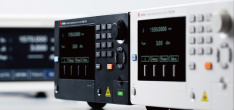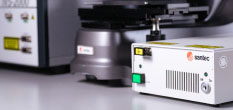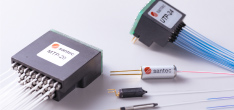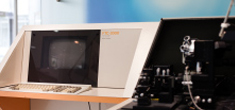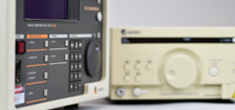Performance and Innovation
State of the Art Tunable Lasers
Here to view our Tunable Lasers
What is a tunable laser?
In conventional lasers, the tunability of the laser is determined by the laser’s medium and cannot be changed freely. By changing the resonator structure or changing the laser medium, the wavelength can be changed within a certain range. There are various configurations of tunable lasers which include free electron, dye and laser excitation. However, applications continue to expand for the semiconductor tunable lasers, since the laser medium can be produced easily at a lower cost. A semiconductor laser operates by passing a current through a semiconductor to allow the laser to oscillate. The light emission mechanism is similar to that of a light emitting diode (LED). The current flows in the forward direction of the p-n junction. When connected to the power supply, the p-side becomes positive and the n-side becomes negative. Electrons flow from the n-side toward the positive. This configuration is seen in a wide range of applications such as the light activation for semiconductor diode pumped solid state (DPSS) lasers, gas sensing, bar code scanners, laser pointers, optical fiber communications, and material processing.
Santec’s Laser Technology
In 1987, we released the first commercially available stand-alone external cavity tunable laser which is operational in single longitudinal mode using a semiconductor laser medium. Since then, for over 30 years, we have been continuously developing and manufacturing products to improve performance.
Benchtop External Cavity Tunable Laser
Our company manufactures and sells tunable lasers (the TSL series) which can achieve external longitudinal single-mode oscillation using a grating to select wavelength (Figure 1). The laser is in a Littman-Metcalf configuration (Figure 2) and the full range is mode-hop free because the wavelength is selectable by changing the resonator length in the grating.
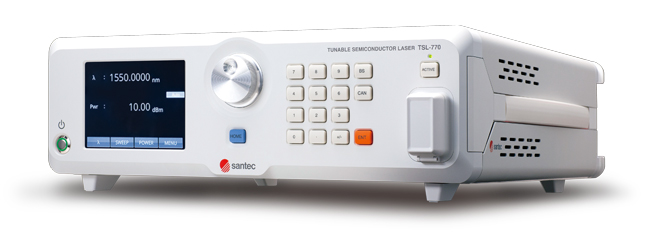
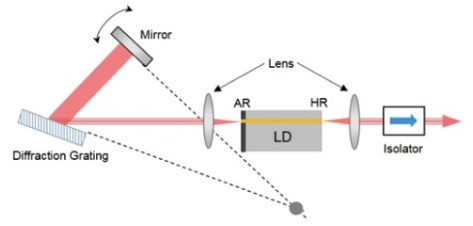
High-Speed Swept Wavelength Multimode Laser
Our HSL-series lasers (Figure 3) are external cavity multi-mode lasers that can sweep the wavelength very quickly. This is achieved by using a polygon scanner or MEMS chips in the wavelength sweeping mechanism. Because this light source oscillates in multimode, it has a wide bandwidth and shorter coherence length compared to our single longitudinal mode laser. However, the fast, repetitive wavelength scanning features make it suitable in applications that require real-time monitoring, such as Optical Coherence Tomography. (Figure 4)
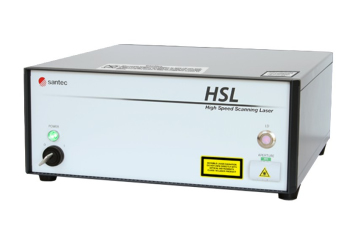
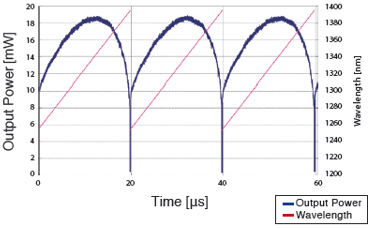
Tunable VCSEL
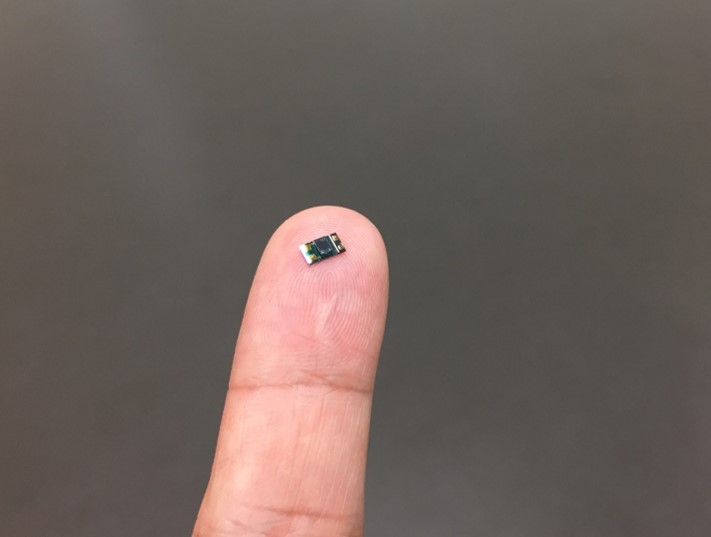
Figure 5. Tunable VCSEL Chip Exterior
Santec’s unique MEMS technology is combined with VCSEL technology to create a swept wavelength laser with single-mode and high-speed features. The electrically pumped VCSEL has a simple configuration that leads to high productivity and reliability due to its low power consumption. MEMS devices are very responsive, and can sweep from lower range frequencies all the way up to 400 kHz.
For more details, please reference this
Optical and Mechanical Design
Santec uses 3D CAD, Ray Tracing, and Structural Analysis (CAE) software to conduct structural and stress analysis which aids its optical and mechanical design. (Figures 6,7) As a result, we can not only optimize design, but also the material used and production time (reduced number of test product verifications), which allows us to be more environmentally friendly.
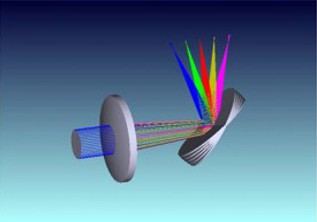
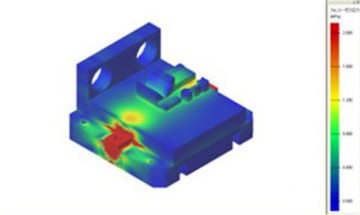
Electrical Circuit Board Design and Software
Low noise, high speed control and precise temperature stabilization of ±0.1 ℃ are all key performance features for the laser. We design and develop firmware and software in-house. (Figures 8, 9)
